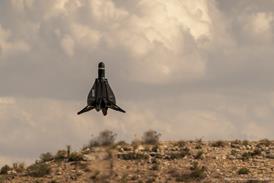Peter La Franchi/CANBERRA
Funding for the Royal Australian Air Force's (RAAF) air-to-ground stand-off weapons project has risen to A$395 million ($234 million) and could rise again due to problems in integrating the PGSUSAGM-142 missile with the General Dynamics F-111C.
The project - Air 5398 Phase 1 - was forecast to cost A$90million to develop a training capability, with missiles being acquired via the US via Foreign Military Sales (FMS) system in a deal negotiated in 1998. A follow-on deal was approved in last year's defence budget for the purchase of extra weapon variants and warstocks direct from prime contractor PGSUS, a Lockheed Martin/ Rafael joint venture.
New funding data on the project released as part of last week's Australian defence budget show that the current approved funding for the initial deal now stands at A$395 million. An estimated A$85 million is to be spent on the project in the coming financial year, with a total of A$51 million spent to date.
The RAAF assumed responsibility for integrating the AGM-142 on to its F-111C aircraft as part of the 1998 FMS deal. Integration is subcontracted to Boeing Australia.
The budget reveals that funding for the RAAF's Project Air 5400 air-to-air missile replacement project totals A$290 million, including follow-on purchases of warstock weapons. The funding confirms that Australia has concluded an FMS deal for Raytheon AIM-120 AMRAAM missiles within the last year, despite neither nation making an announcement.
Air 5400 allocations include the purchase of Matra BAe Dynamics ASRAAM short-range missiles under a A$116 million contract signed in November 1998 - suggesting the AIM-120 deal is worth at least A$170 million.
Source: Flight International























